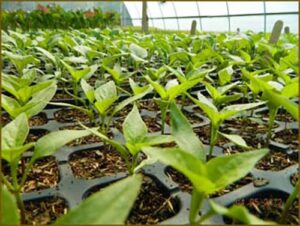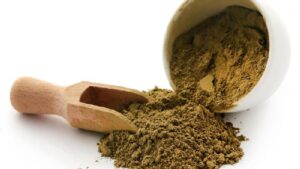You must try Tarragon if you want a fresh, spring-like taste and a touch of elegance in your dishes or salads. Known for its high aromatic qualities as well as a delicate licorice flavor, tarragon is a leafy green herb. The French commonly use it in their cooking. You can buy tarragon fresh or dried, all year round.
What is Tarragon?
In the sunflower family, tarragon is scientifically known as Artemisia dracunculus. North America and Eurasia are the main growing regions of the plant. There are several minerals in it, and it can grow up to five feet in length. In addition to its wide-ranging benefits for health, it is traditionally used as a medicinal herb. Due to its strong flavor, medicinal properties, and vast health benefits, tarragon is a popular choice for culinary purposes.
When planted, tarragon will grow back every year. There are several licorice-tasting vegetables in the Artemesia genus, including the greens used to make French aperitif absinthe. A tough, woody stem and long, thin, pointed leaves make up the plant.
Let’s take a look at the Tarragon herb varieties and where to buy them.
Tarragon Varieties
The following are some of the varieties of tarragon herbs that are available on the market:
A popular variety of tarragon is the French tarragon (Artemisia dracunculus).
Russian Tarragon is a bitter variety of this herb (Artemisia Dracunculoides). In addition to looking similar to French tarragon, Russian tarragon has a stronger, more bitter taste and is most often used to flavor drinks.
Spanish Tarragon (Scientific name: Tagetes Lucida) This variety of tarragon is more robust in flavor than the others and is useful for medicine.
Fresh Tarragon Vs Dried Tarragon
Tarragon herb, like many other herbs, differs greatly between fresh and dried forms. The difference is even more noticeable since tarragon is a delicate herb and more volatile when dried. There are many chefs who will not use dried tarragon because it loses some of its delicate and fine characteristics. A dehydrator or an oven on warm (no higher than 200F) can also be used to dry fresh tarragon.
It is important to know and follow some little tips if you want to grow tarragon in your greenhouse. European regions with mild climates are home to tarragon. The plant grows well in well-drained soil in a sunny or partially shaded spot. Temperatures in the spring are ideal for it, and overly hot climates don’t do well with it.
What does tarragon tastes like?
The taste of tarragon can either make people love or hate it, depending on whether they prefer it over licorice. In spite of this, the herb brings a complex flavor to the palate that goes beyond just anise. In contrast to other foods with a licorice-tasting taste like fennel, it tastes bitter and sweet, with touches of vanilla, mint, pepper, and eucalyptus. In spite of this, the French variety is mild, combining these contrasting flavors to create a delicate and elegant herb. Even I – someone who dislikes licorice – love the herb’s licorice flavor. As a soft green herb, it also has some grassy flavor.
Where to buy the best tarragon?
Almost every supermarket sells dried tarragon, and most major retailers sell it online as well. Unlike other herbs such as parsley, chives, dill, and cilantro, fresh tarragon may be more difficult to find. You’ll find it in the produce section of grocery stores, either in bunches or in clamshell packaging. Your local farmers market might also sell it in the spring and early summer. Potted tarragon plants are also available at gardening supply stores and online; place them in a sunny spot and water them regularly.
How to keep tarragon?
Fresh tarragon can be stored for up to five days. Tarragon leaves should be loosely wrapped in a towel after washing in order to absorb moisture. After that, place it in the refrigerator to chill. If your tarragon leaves have brown spots, throw them away.
It is possible to store dry tarragon for a longer period of time. It can be frozen and stored in the refrigerator. Using a vacuum sealer, remove the extra air from the storage bag. The dried tarragon can also be chopped and placed in the ice tray. After that, fill the ice tray with water so that the tarragon freezes.
Final Thoughts
There are many health benefits associated with tarragon, which is an extremely nutritious plant. The benefits of tarragon extend to almost every part of your body. As well as improving mental health, improving sleep quality, enhancing appetite, reducing pain associated with conditions such as osteoarthritis, killing bacteria, reducing oxidative stress, improving digestion, heart, and dental health, regulating blood glucose levels, and reducing weight and building muscle, it also kills bacteria and reduces oxidative stress.
In addition to its culinary and medicinal uses, tarragon comes in several varieties. Also, you can easily incorporate tarragon into your diet on a regular basis and reap its immense health benefits. Although most people can use it safely, it may cause specific allergies and side effects. It should, therefore ,only be used by specific populations after consulting their healthcare providers.
Please share your favorite native tarragon recipe in the comments section if you enjoyed this post.






